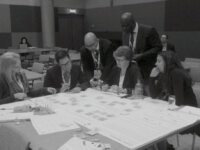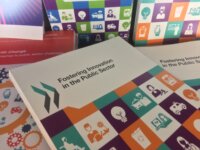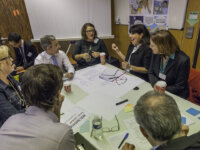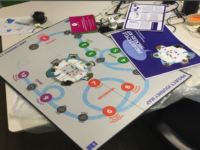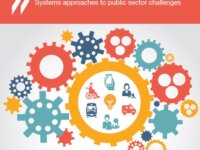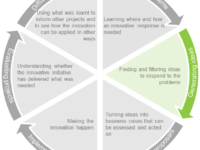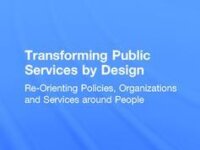This blog was authored by former OPSI Policy Analyst, Matt Kerlogue In my previous blog post, I set out the OPSI’s beta model of skills for public sector innovation, structured around six skill areas: iteration, data literacy, user centricity, curiosity, storytelling and insurgency. But providing an outline and description of these six areas is hardly sufficient to enable the uptake of these skills. Our work to develop the skills model, alongside the Observatory’s wider work...

We here at OPSI recognise the value of celebrating innovation, regardless of whether the innovations are great successes or whether they are failures that we can all learn from. An increasingly popular way to celebrate innovation is through awards that can provide well-deserved recognition for innovative teams and projects, and sometimes even funding to help take innovations to the next level. They’re great for surfacing examples and for inspiring others but they can also leave...
This blog was co-authored by Justin W. Cook On the 28th of February, policy makers, systems thinkers, designers, academics and others convened in Paris for an all day workshop discussing new ways to address public challenges marked by complexity and ambiguity inherent to many policy fields today. This deep look at uncertainty sits in the context of OECD’s efforts to adapt its advisory capacity and develop new approaches to respond to these changing circumstances. In...
GPS system came out of the US Defence Department. Same as ARPANET, the basis of the modern Internet. NASA scientists put the man on the moon. Point here? Public sector innovation does not happen by itself but grows out of people and organisations (and their rules) which made inventions possible. This is the point of departure of a recent report Fostering innovation in the public sector we have produced which explores the role that central government functions...
Have you ever heard the warnings “we shouldn’t innovate for the sake of it” and “innovation isn’t an end in itself”? In this somewhat contrarian post I’d like to suggest a different perspective, one that argues that innovation for its own sake is both: a) quite uncommon, as innovation usually serves a number of purposes, even if they are not always explicit; and b) not something to worry about even when/if it does happen, and...
The case for innovation in the public sector is well known, but despite being on the agenda of governments for much of the past decade it often remains limited to small teams, scattered activities and/or high profile projects. Often these teams and projects involve external innovators and specialists being brought in to government to work on key projects. While governments will still need the expertise of external specialists – to ensure they maintain access to...
This blog was authored by guest blogger, Benjamin Kumpf Policy Specialist, Innovation, United Nations Development Programme “We are trying to prove ourselves wrong as quickly as possible, because only in that way can we make progress.” Richard Feynman, Noble Prize winning physicist, emphasized this paradigm as guiding principle for work in natural sciences. Based on what we have learned over the last three years in the Innovation Facility in the United Nations Development Programme…
The draft report “Working with Change: Systems Approaches to Public Sector Challenges” is now available online. In addition to the framework that was introduced previously on Hackpad, the team working on systems thinking at the Observatory has added four in-depth case studies from Canada, Finland, Iceland and the Netherlands to the analysis. The empirical cases show that systems change in the public sector is possible; moreover, that it can work in diverse settings: child protection...
Today we’re releasing our ‘alpha’ version of the report about the second stage of the innovation lifecycle – generating ideas. We’re looking for feedback and constructive critique about what might have been missed, what should not be included, what is useful and what is less so. We’d also like this work to reflect your lived experience as much as it can, so we also look forward to receiving any examples or stories that can illustrate...
This blog is authored by guest blogger, Sabine Junginger Head, Competence Center for Design and Management at University of Applied Sciences and Arts Lucerne Public sector challenges inherently concern and involve people. “The Public” after all does not exist in the absence of people. Nor does government. Those we entrust with the responsibilities to govern are people. We ask policy-makers and public managers to develop and implement policies that lead to socially desirable outcomes. In…

